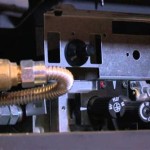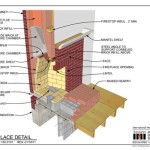How Do Gas Fireplaces Work?
Gas fireplaces offer a convenient and efficient alternative to traditional wood-burning fireplaces. They provide warmth and ambiance with the simple flick of a switch or the push of a button, eliminating the need for wood storage, tending to a fire, and cleaning up ashes. Understanding how a gas fireplace operates provides insight into its efficiency, safety, and maintenance requirements. Gas fireplaces are composed of several interconnected components that work in concert to deliver heat and a realistic flame.
At its core, a gas fireplace is a controlled combustion system. It relies on a supply of natural gas or propane, an ignition system, a burner, a heat exchanger, and a ventilation system. The precise interplay of these elements ensures both safe and effective operation. The type of gas used, the design of the burner, and the efficiency of the heat exchanger directly influence the fireplace's heating capacity and overall performance.
Gas Supply and Control Valve
The foundation of any gas fireplace is its gas supply. Most units are designed to operate on either natural gas or propane, with conversions sometimes possible but usually requiring professional installation. Natural gas is typically supplied through municipal pipelines, while propane is stored in tanks, either above or below ground. Regardless of the gas source, a gas line connects the supply to the fireplace through a shut-off valve. This valve provides a manual way to completely cut off the gas supply in case of emergency or during maintenance.
The primary control mechanism for the fireplace is the gas control valve. This valve regulates the flow of gas to the burner based on the user's settings, often controlled by a thermostat or a remote control. Modern gas control valves are complex devices incorporating safety features like a thermocouple or flame sensor. These sensors detect the presence of a flame and will automatically shut off the gas supply if the flame is extinguished, preventing the accumulation of unburned gas. The gas control valve also manages the pilot light, a small, continuously burning flame that ignites the main burner.
The sophisticated nature of the gas control valve ensures user convenience and safety. Depending on the model, it may offer variable flame height adjustments, timer functions, and even integration with smart home systems. Regular inspection and maintenance of the gas control valve are essential to ensure its proper functioning and prevent potential hazards. A certified technician should perform these tasks to guarantee safety and compliance with local regulations.
Ignition Systems and Burners
The ignition system is crucial for initiating the combustion process. Gas fireplaces employ different ignition systems, including standing pilot lights, intermittent pilot ignition (IPI), and direct spark ignition (DSI).
A standing pilot light constantly burns a small flame, which is used to ignite the main burner when gas is supplied. While simple and reliable, standing pilot lights consume gas even when the fireplace is not in use, leading to higher energy costs. Intermittent pilot ignition (IPI) systems only ignite the pilot light when the fireplace is turned on. An electronic igniter generates a spark that lights the pilot flame, which then ignites the main burner. IPI systems are more energy-efficient than standing pilot lights, as they only consume gas when actively in use. Direct spark ignition (DSI) systems eliminate the need for a pilot light altogether. A high-voltage spark directly ignites the gas flowing to the main burner. DSI systems are the most energy-efficient option, as they do not require any continuously burning flame.
The burner is where the actual combustion of gas occurs. Gas fireplace burners come in various designs, including ceramic logs, lava rocks, glass beads, and ribbon burners. The design of the burner influences the appearance of the flame and the efficiency of heat distribution. Ceramic logs are the most common type, mimicking the appearance of a traditional wood fire. Lava rocks and glass beads offer a more contemporary aesthetic, while ribbon burners create a long, continuous flame. The burner is designed to mix gas and air in the correct proportions for efficient and clean combustion. The even distribution of gas across the burner surface ensures a uniform flame pattern and optimal heat output.
Burner maintenance is essential for optimal performance and safety. Regular cleaning removes dust and debris that can clog the burner ports, leading to incomplete combustion and reduced heat output. A qualified technician should inspect the burner annually to identify any signs of damage or corrosion. Correct burner operation is crucial for preventing the buildup of carbon monoxide, a dangerous and odorless gas.
Heat Exchangers and Ventilation
Once the gas is combusted, the heat generated needs to be efficiently transferred into the room. This is accomplished through a heat exchanger. Heat exchangers are typically constructed of metal, such as steel or cast iron, designed with fins or other surface enhancements to maximize heat transfer. The hot combustion gases pass through the heat exchanger, transferring their heat to the surrounding air. This warmed air then circulates into the room through convection or with the assistance of a blower fan.
The design of the heat exchanger directly affects the efficiency of the fireplace. A larger surface area and efficient airflow patterns result in more effective heat transfer. Some gas fireplaces incorporate a blower fan to actively circulate the heated air, improving the distribution of heat throughout the room. Blower fans can also be adjusted to control the speed and intensity of the airflow. Maintenance of the heat exchanger involves periodic cleaning to remove dust and debris that can reduce its efficiency. A buildup of soot or other contaminants can impede heat transfer and potentially create a fire hazard.
Ventilation is a critical aspect of gas fireplace operation, ensuring safe and proper exhaust of combustion gases. Gas fireplaces are categorized as either vented or vent-free (also known as ventless). Vented gas fireplaces require a flue or chimney to expel combustion products, such as carbon dioxide, water vapor, and trace amounts of other gases, to the outside. The flue must be properly sized and installed to ensure adequate draft and prevent backdrafting, which can introduce dangerous gases into the home. Vent-free gas fireplaces, on the other hand, do not require a flue or chimney. They are designed to burn gas so efficiently that the combustion products are minimal and considered safe for indoor use. However, vent-free fireplaces are subject to strict safety regulations and may not be permitted in all jurisdictions. They also require adequate ventilation in the room to prevent the buildup of humidity and carbon monoxide.
Regardless of the type, proper ventilation is crucial for maintaining indoor air quality and preventing health hazards. Vented fireplaces should be inspected annually to ensure the flue is free of obstructions and in good working condition. Vent-free fireplaces require regular monitoring of carbon monoxide levels and adherence to manufacturer's recommendations for room size and ventilation. A carbon monoxide detector is essential for all gas fireplaces, providing an early warning of potentially dangerous gas leaks.
In summary, gas fireplaces rely on a complex interplay of components to provide heat and ambiance. Understanding the function of each component, from the gas supply and control valve to the ignition system, burner, heat exchanger, and ventilation system, is critical for ensuring safe and efficient operation. Regular maintenance and inspection by a qualified technician are essential for preserving the longevity and safety of the fireplace.

How Gas Fireplaces Logs Work At Gasfireplaces Org
Understanding How Direct Vent Works Heat Glo

Gas Fireplace Operation How Do They Work Early Times

Are Vent Free Gas Fireplaces Safe Ventless

What You Need To Know About Gas Fireplace Logs Fireplaces Direct Learning Center

How Does A Gas Fireplace Work

Everything You Need To Know About Gas Fireplaces Energy Trust Of Oregon

Workings Of A Fireplace Royal Oak Mi Fireside Hearth Home

What Is A Direct Vent Fireplace Fireplaces Learning Center

How Does A Gas Fireplace Work
Related Posts








